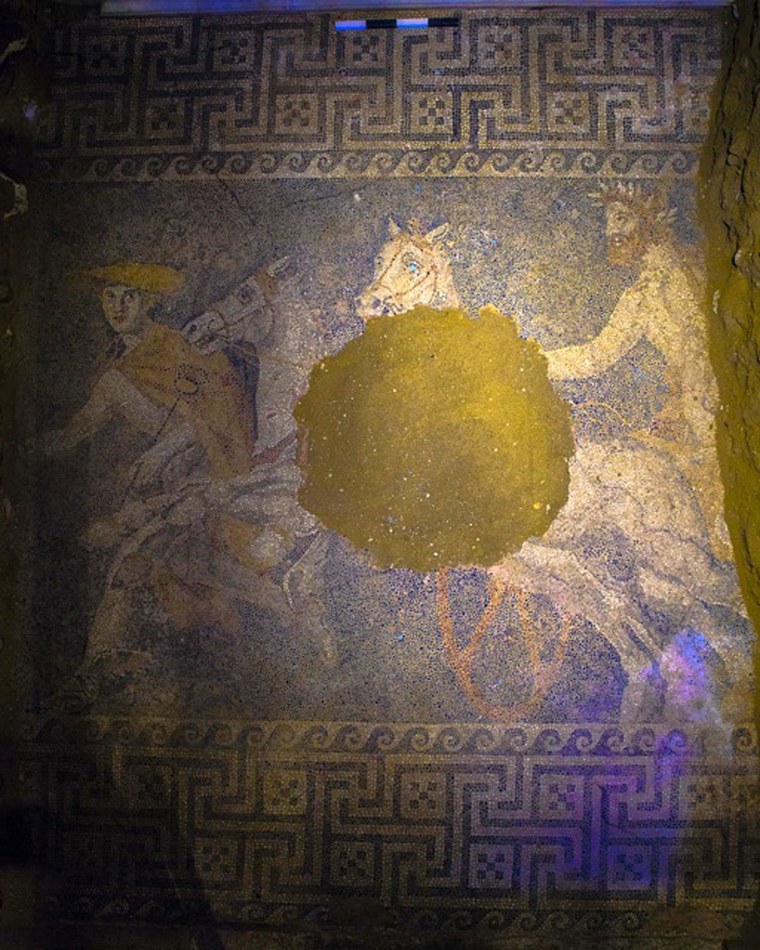Archaeologists digging through an ancient tomb in Amphipolis in northern Greece have uncovered a floor mosaic that covers the whole area of a room seen as the antechamber to the main burial site. The mosaic, 3 meters (10 feet) long and 4.5 meters (15 feet) wide, depicts a horseman with a laurel wreath driving a chariot drawn by two horses and preceded by the god Hermes. According to a Culture Ministry announcement on Sunday, Hermes is depicted here as the conductor of souls to the afterlife.
The mosaic is made up of pebbles in many colors. A circular area of the mosaic is missing, but authorities say enough fragments have been found to reconstruct a large part. Archaeologists have dated the mosaic to the last quarter of the fourth century B.C., consistent with their belief the grave contains the remains of a contemporary of Alexander the Great — most likely a relative or one of Alexander's generals. Alexander, who died in 323 B.C., is believed to have been buried in Egypt — but his tomb hasn't been found.
